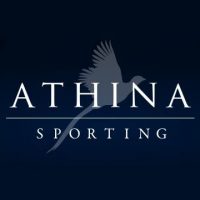01 December 2007, 11:51
PWSShort Version:
Mid-Asian Ibex/Roe Deer hunt booked through Bob Kern's Hunting Consortium, travel arranged by Kathi Klimes Wild Travel.
Location: Altyn Emil, Kazakhstan via Almaty, via Lufthansa - Frankfurt, via United - Chicago O'Hare
Date: 12-26 October2007
Species hunted and Taken: Mid-Asian Ibex, Siberian Roe Deer, Chukar partridge
Species Observed: Kazakh Zebra (Prezwalski's Horse), Persian Gazelle
Weather: Initially warm and sunny (up to 70F) during the day down to 40F at night, moving to 30-40F during the day, snow, rain, and fog, back to dry and sunny but cooler. Dry, windy, and cold typical.
Camps: Soviet era vacation camps consisting of multi-room houses with indoor plumbing in ranch/pastoral type settings. All meals were provided and included lots of fresh and delicious local fare.
Guides: Area rangers who are long term local residents plus local assistant guides for each hunter.
Terrain: Has been compared to northern Arizona/New Mexico and not difficult at all by mountain standards. Steep places and lots of walking involved but footing generally very good and lack of snow and thick ground cover made travel up to ten miles a day reasonable. Horses were not used nor needed as camps were within jeep/foot travel of hunting areas.
Hunting/Shooting Ibex: Good challenge to hunt these ibex. They are familiar with hunters and are wary but they are abundant and many mature males were sighted. They are frequently found in bands near steep terrain but barring poor shooting, poor health, or unwillingness to shoot anything under 110cm, success should be likely. It will take some effort but not unusually difficult. Shots were frequently at long range, up to 300m, often at disturbed animals.
Hunting/Shooting Roe Deer: Very similar to hunting American Mule Deer. Found in brushy draws in the foothills. Found alone or in small bands of 2-4 animals and blend in well with their terrain. Typically glassed for and spotted in the morning or evening and stalked within range. Open country allows for shots at long range but it's also very good for stalking.
Conclusion: Very enjoyable trip with scenic and comfortable camps; capable, professional, and friendly personnel; and excellent hunting in a beautiful, productive central Asian ecosystem.
The structure of the hunting arrangements was not as what you would find in well established African or upscale North American hunting but with a bit of patience, keeping open communication, and a degree of flexibility, there's every reason a hunter should get their game and have a thoroughly enjoyable trip.
Long Version:
For about ten years now, a hunt in Asia, particularly a mountain hunt, has held a fascination for me. The opportunity arose this fall for my partner and I to effectively budget the time and money for a hunt. As we are neither rich nor well heeled, we decided that an ibex hunt would offer us the adventure, the trophy, and the tradition we were looking for without breaking the bank. Not wanting to travel so far for just one animal/habitat, we discussed our options and being a great lover of deer hunting, added a roe deer hunt to the itinerary.
The hunt was booked in February through Bob Kern's Hunting Consortium. Our initial talks lead us to a hunt in the Djungarski reserve along the eastern Kazakhstan border. However, the earliest we could depart Alaska, due to work constraints, was the 10th of October and the elevations in the Djungarksi could become problematical weather-wise. It was then decided that we would hunt in the Altyn Emil reserve. By early September, travel arrangements were completed with Kathi Klimes's at Wild Travel and within a month we were on our way.
Travel through Chicago O'Hare went without a hitch but Bob forewarned us of recurring problems with weapons transfers with Lufthansa in Frankfurt. It has happened, for whatever reason, that weapons held in locked storage due to lengthy layovers frequently fail to be brought out of storage and forwarded with the owner. On both stopovers, one of six hours, the other of four, we inquired at the gate as to the status of our luggage approximately 90minutes before departure and had no trouble with "lost" luggage.
The only trouble we had, other than short mechanical delays in Alaska, was a small glitch in Frankfurt. During the six hour layover, we zipped downtown for a walk and snacks at the Hauptbahnhof. We'd noticed the broadcasting vans out front but didn't make a note of it until we were waiting for the short range trains to return to the airport. The time we were ready to return was the exact time the engineers went on strike! After a bit of confusion, we made it upstairs to the long distance trains and to the airport and on our way.
Upon arrival into Almaty on the night of October 12th, we were met by Boris Annenkov, The Hunting Consortium's representative in Kazakhstan, his customs liaison Natasha, and an interpreter, Christine. No difficulties whatsoever occurred with getting through customs as Natasha was firm and professional. Even with previously obtained visas and other forwards, this portion of any overseas trip always concerns me and especially with the language differences, the assistance of Boris and his agents was much appreciated.
After the formalities of entering the country, we were whisked to our hotel and again were very glad to be in the hands of a local. Even at 11:00pm, the number of drivers out and about and the rate and temerity at which they drive was a bit overwhelming! If you travel for at least twenty minutes, you would be assured of witnessing the progress of at least one fender bender. Despite the thrills of driving in Almaty, or perhaps because of it, the energy and excitement of the place was charming. At the hotel we met another agent, Alexander "Sasha", who would meet us the next afternoon and drive us out to the hunting camp.

The drive north out of Almaty the next day was uneventful if not fast. Sasha brought along another interpreter, Indira, and the four of us chatted a bit to practice and learn English, Russian, and Kazakh. We stopped along the main highway to purchase fresh fruit and veggies for our stay. From there, we proceeded north past Lake Kapschagai where we turned east. Sasha claims to be the fastest driver on the road that runs from the main highway and the reserve and as the road is not maintained, this is no small claim! Within about four hours from Almaty, we turned down a track north toward the mountains of the Altyn Emil and found ourselves in a delightful "camp" nestled in a box canyon oasis. We would be living in style as our camp was multi-roomed house with indoor plumbing, surrounded with out buildings, an orchard, a garden, and bit of livestock, all in an idyllic location. Our guide, Zheynishbek, who was also the area park ranger, and his wife, Doukan, who was also the camp cook and unofficial boss, maintain and reside at the camp which was originally set up as a vacation lodge for politicos.
With Yelan, the assistant guide, I confirmed the sight on my .338 (which I use for everything) that afternoon and we reconnoitered the valley a bit to stretch our legs. Zheynishbek was away on business but arrived around nightfall and we all sat down to the first of many fine dinners. Zheynishbek is a loquacious man and between the interpreter, Zheynishbek, and I, and Russian, Kazakh, English, and ultimately German, we settled on plans to pursue ibex in the morning. We were under the impression that we'd hunt roe deer first as they would soon be dropping their horns but we must give credit to Bob and his information on how it would be regarding the difference between plans made here and how it would all work out there.
The next morning began inauspiciously as the cook's alarm clock failed to operate and although the interpreter, my partner and I were up and ready at 05:00, the camp remained dark and silent. After milling around and wondering a bit, at about 06:00 the generator flickered to life and breakfast was served and we were on our way by dawn at 07:00. As long as this didn't become a pattern, I was not yet concerned about the loss of an important early hour and, as it turned out, this first day's delay turned to our advantage.
We were to hunt ibex an hour's drive from camp, heading south out of the valley of the camp, down to the desert plains paralleling Lake Kapschagai, then turning back north into a very tight, rocky, and brushy jeep track along the bottom of a narrow, steep valley winding perpendicular to the main ridges. This morning along the desert plain is where we observed the gazelles and Kazakh horses. I was concerned about all the "road apples" lying about, fearing that pastoralists were overrunning the area until we encountered the wild horses.

After bouncing up into the mountains via the steep valley, the track opened up into a broad grassy filled valley parallel with the main ridges. To the west of the large valley were rugged cliffs and bluffs and my blood was definitely flowing with anticipation of what might be dwelling in those rocks.

Having never seen an ibex in the wild, I was wondering what to look for when that question was answered by the image of a thick and dark ibex, obviously aroused by our appearance and tersely stepping along on a small grassy shoulder crossing the bottom of the valley. I casually pointed to the ibex to Zheynishbek. He'd not yet noticed it as the bouncing jeep required the bulk of his attention but upon glancing up, his focus certainly did shift, as did the gear of the jeep! "Alte Buck!" he exclaimed and we raced ahead to get the jeep behind the cover of the shoulder.
As soon as we got behind the rise, there was no point in trying to hide and sneak as we practically ran into a band of at least 75 animals along the bottom of the valley. We slammed the jeep to a halt, scrambled to get my rifle out of the case, and boiled out of the vehicle with binoculars in hand. The band was comprised of a full range of sexes and maturities, including at least 10 adult billies well worth a closer look. As they all panicked and bounded up the steep rocks behind the shoulder, Zheynishbek quickly assayed them, easily recognizing the best billy was definitely a shooter but unable to quickly convey to me which one he was. "Alte buck!, Groß buck!, Shiessen!, Shoot! Shoot! Aahhhh!!!" After quite a bit of gesturing, confusion, glassing, and excitement at a golden opportunity quickly fading, Zheynishbek vehemently pointed to the black shoulders on the vest I was wearing. That was the decisive bit of information I needed. There was one billy noticeably darker than the rest. By now, they were approaching the limits of where we could see and Zheynishbek was definitely fearing in an "oh well, it was too good to be true" way that I wouldn't get a shot. Although the bulk of the ibex were now out of sight, they'd slowed down, confident in their elevation. The largest billy continued to climb slowly upward and away but in tracking him in my scope, it was a shot I could make and so made the proper adjustments and fired. He stumbled but did not fall. Zheynishbek gave a whoop! The billy struggled upward and behind a rocky outcrop and when he next cleared, moving much slower, I gave him one more, dropping him with a resounding bullet strike. As it turned out, my first shot was, unfortunately, a bit high and rear, taking him high across the pelvis. The next shot was decisively placed into his thorax, breaking the offside of his spine due to the steep angle. Yelan and Zheynishbek fell about the place! I was a bit overwhelmed as the scenario of finding a good billy immediately wasn't among those I'd played in my mind but I've feel that when the Red Gods hand me an easy one, I'll take it and savor it. So there we are, 08:30 on hunting day one, and the primary goal of the trip is in the bag.


We spent the rest of the morning lowering the billy, dressing him, and returning to camp. Zheynishbek and Yelan spent the afternoon doing the final dressing and began preparing the cape and skull. I volunteered to help with the caping but Zheynishbek explained that he's already done at least 300 and joked that he should be capable. He certainly was and it was a pleasure to watch his dexterity with a knife.


It was a pleasant evening back at camp, the successful hunter home from the hill. For dinner that evening, we had a traditional dish of noodles and ibex and although certainly not "heart smart" regarding the amount of fat left with the meat, it was very delicious. I was pleased that we ate the billy and we were fortunate to do so at least one meal each day we were in this camp. There's no mistaking the flavor of goat but it was mild and savory and my partner and I thoroughly enjoyed it, her even more than me. I'm sure it helped that Doukan is an excellent cook. That night, it was decided that we would look for a roe buck in the morning.
The next morning started on schedule and we were in position on a rolling rise to the west of camp after driving another hour or so away. This time, however, we cut across the foothills and uplands and were hunting smoother land. Zheynishbek again proved his worth in spotting three deer right at daylight, one of which was a good buck. I managed to see one of the does but had difficulty picking out the other two before they fed over a rise and out of sight. Because of the wind direction, we climbed down into a draw to circle around where the deer where headed. This was great pastureland and the grass and weeds in the draw were thick. Being fall, it was dry and having enough animals to beat paths, the travel was easy despite the vegetation. There was fresh sign from wild boar and Zheynishbek suggested I carry my rifle at the ready. We didn't encounter the pigs however. In the valleys were the remains of rock wall corrals and Zheynishbek outlined "1920" on his palm and said "Stalin". They were the remains of the Kazakhs who herded their animals to the hills during the initial Soviet collectivization.
I would say the roe deer hunting was exactly like hunting pronghorn antelope or mule deer in the central US except for the complete lack of fences and boundaries. There were a few tracks from equipment here and there and in the flatter draws and valleys where the Kazakhs cut hay from small patches. Other than the disperse tracks of livestock and wild game, that was it for the rolling hills.

We made the circle in about two hours of walking and Zheynishbek spotted a doe bedded in some brush in a draw across a valley. It took me a good twenty minutes to identify the deer. I'd noticed the white on it's rump it didn't register as a deer until I recognized the ears. After that first close sighting, I got a little better at spotting them. We watched the draw for about an hour but didn't locate any further deer. We pulled back and got a better view of the valley and Zheynishbek soon located a buck and doe milling around in a rocky patch, alternating between bedding and feeding. They were around 300m distant and I was willing to shoot but Zheynishbek felt we could get closer. We pulled back and managed to get within about 200m when we spooked two deer we hadn't seen. The buck and doe in the rocks were alerted but didn't run and I used a small bush to get within 175m for a clear shot and dropped the buck with a high shoulder shot.

It was not even noon yet and I hated to do it twice in a row but again, why refuse a shot at a good buck? We now had nine hunting days remaining in the budget and both intended quarry were in the bag.

By now, the sun was well up and the weather, as it was for the first five days of the trip, was warm and breezy. After a leisurely hour long stroll back to the jeep, we had lunch of ibex, exotic tinned meat and fish, cheeses, chuzuk (Kazakh sausage), local apples, and bread in the shade of the jeep.

On the way back to our camp, we passed through a broad plain and stopped by a local ranch house. They had a Bactrian camel tethered in a pasture and we hoped to get photos. We were to learn Kazakh hospitality as they not only let us get the pictures we wanted but insisted that we go for rides and then invited us in for mid-day tea. We were struck by the gracious generosity and the delectability of the farm fresh food. We definitely wished we could speak Russian to converse with the octogenarian patriarch.

That evening back at camp was a repeat of the night before except Doukan had enough time to prepare two heaping platters of manty (steamed Kazakh dumplings) from the ibex. She said they have a saying that "a man should be big in all ways" so I did my best to eat as much as I could. This was easy enough as they were very tasty but I'll admit being awake all night from a big belly full of meat, Ahhhh, meat coma...
Over breakfast the next morning, with the help of Indira, we discussed our options with Zheynishbek. Through our discussion, we learned that we were permitted to hunt boar, gazelle, and wolf. Even though we'd brought contingency money, we'd only had trophy fees for one ibex and one roe deer and so needed to know the trophy fees of those animals before agreeing to pursue them. In addition, we had not investigated any permits required on this end. As my partner and I are not much for cities and we felt that the camp was such a lovely location, we could spend quite a bit of time exploring the valley if that was our option. Zheynishbek drove into town to inquire with his boss about the fees for other animals and other possibilities. When it came back that the trophy fees were higher than our contingency funds, it was suggested that we transfer to the ibex camp we originally thought we'd be sharing. The original itinerary outlined four days for roe deer then a day's transfer to another camp for six days of ibex. Obviously, that plan had changed.
The next camp was in an open valley surrounded by vast open, grassy, rolling hills. Here we would share with two hunters from New Zealand and Boris Annenkov. The other hunters would roll out early in the morning on their pursuits for ibex and my partner and I would hike the surrounding area for pictures and fresh air. Boris had an ace up his sleeve, however, as he'd brought his pump shotgun along! This was quite a boon considering the abundant chukar partridges we'd been flushing every day. For the next four days, we would get out of bed early but not before light, enjoy a light breakfast, load a lunch in our rucksacks and wander about, looking for chukar, exploring the rolling hills, and occasionally glassing a roe deer or two.

This was a pleasant way to spend the waning days of a hunting vacation but the itch to hunt ibex had not been completely scratched by the events of the first morning. At dinner one evening, our campmates offered us to accompany them on their hunt but Boris cautioned that we should consult the guides before making plans. They preferred to limit the number of people in the hunting party, pointing out that the ibex have wonderful eyesight and are very wary of man. Not wanting to spoil another hunter's chances, we stayed back and wished them luck. One afternoon, we tagged along with Boris on a grocery run to the nearest village. Even though it's a world away from Alaska, we remarked at the similarities to some of the remote village up here.
By now, the winds had changed and the weather that had been warm, sunny, and delightful, went to foggy, snowy, and cold. The Kiwis were weathered out of the ibex mountains for one full day and they borrowed the shotgun for some wing shooting. After two days, the fog began to lift and they returned to the hunt. In the next few days, they managed to shoot a 105cm, a 106cm, and a 112cm between them. The hunter who tagged the 112 stayed back the second to last afternoon to pursue roe deer and at lunch he suggested that we follow the jeep track he'd taken to the mountains where he'd found his ibex. He said the track wound up the valley behind camp and only required 20minutes to crest in the jeep. My partner and I followed the track that evening and learned that the divide was only three miles from camp and down the other side was the steep country that contained ibex. The next morning, our last in the field, we arose early with the other hunters and legged it back to the divide.
Very soon upon crossing the ridge about daylight, we spooked a small band of ibex. They quickly scattered and as we were dressed for hiking and not glassing, they managed to put some distance between us while we piled on clothing against the cold wind. Nevertheless, we managed to see a bit of the herd and watched which direction they headed. For the next few hours, we slowly poked along the top, keeping an eye out for ibex, hoping to take some pictures of them, and thrilling in the scenery.

(ibex at home)
By 10:00, we'd lost sight of the main band of animals but we watched two lone, large billies bed down on a distance spur of the ridge. Not wanting to spook the rest of the herd and not knowing exactly where they went, we carefully stalked the two bedded billies. By 14:00, we had made it into camera range (about 150 yards). Right as we settled down to wait for them to stand and give us a good pose, a strong gust of wind blew from us to them and they spooked. In a moment, our day's efforts were blown as the billies leaped up and sped off. To our fortune, however, they did not get a good location on us and ran off the ridge then parallel below and toward us, about 200 yards away. Our camera equipment is not the best but we managed to get the images of ibex we were hoping for. In addition, we learned a bit more about where to find ibex, how they behave and some subtleties between the males.

(young)

(older)
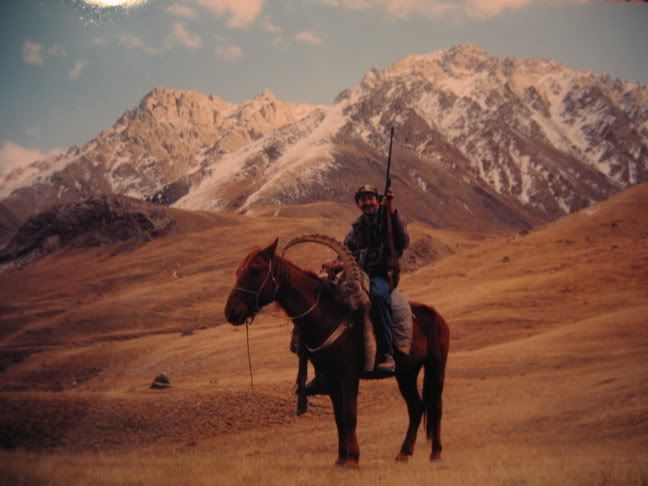
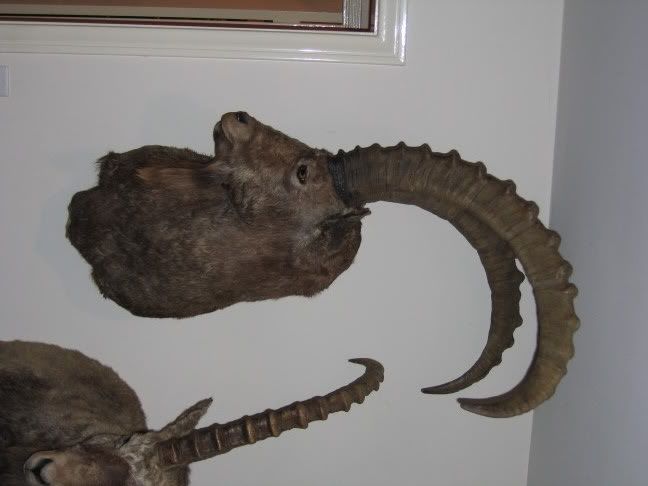

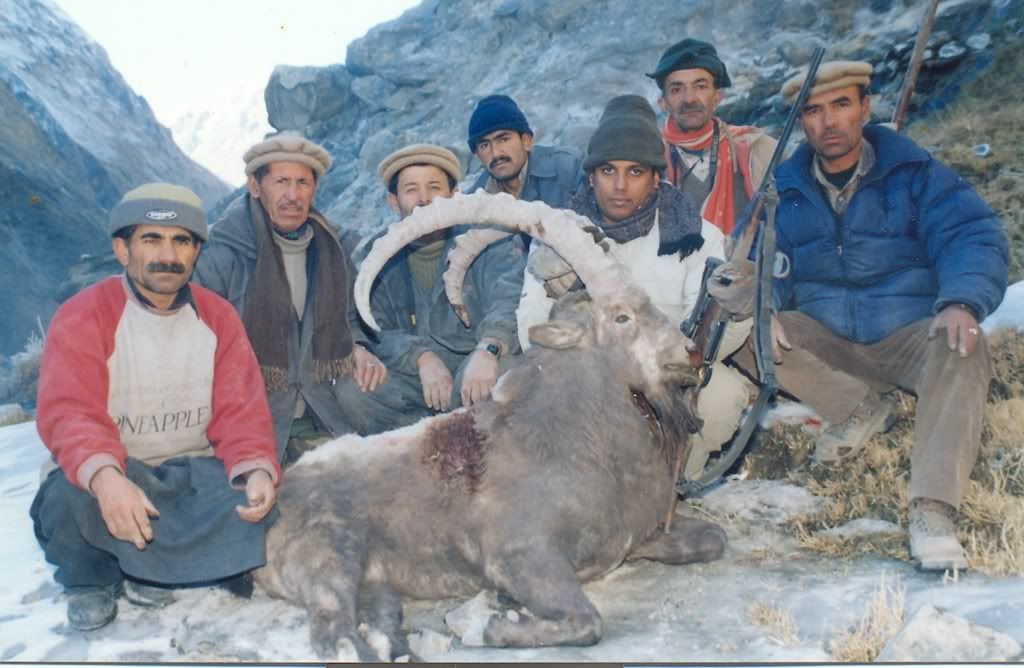 ]
]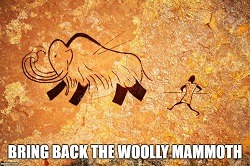
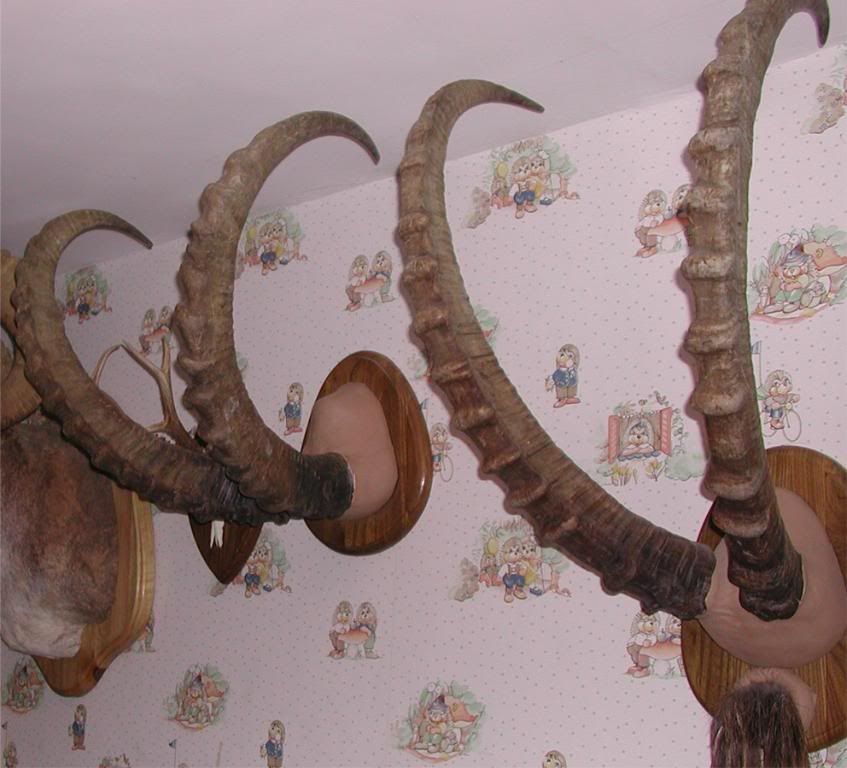
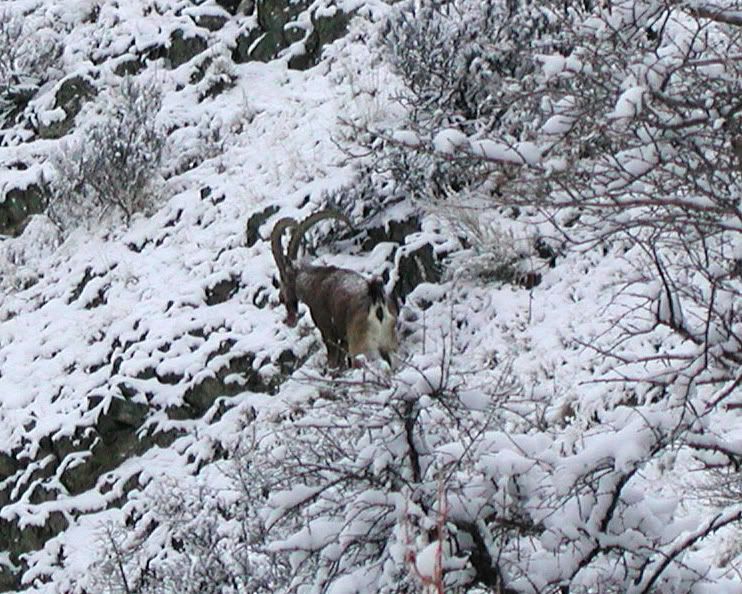
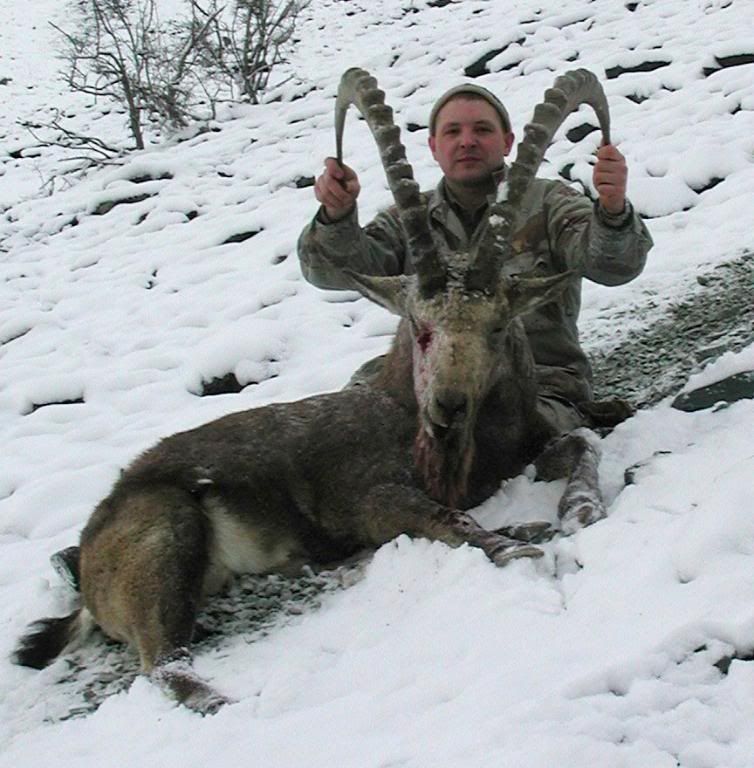
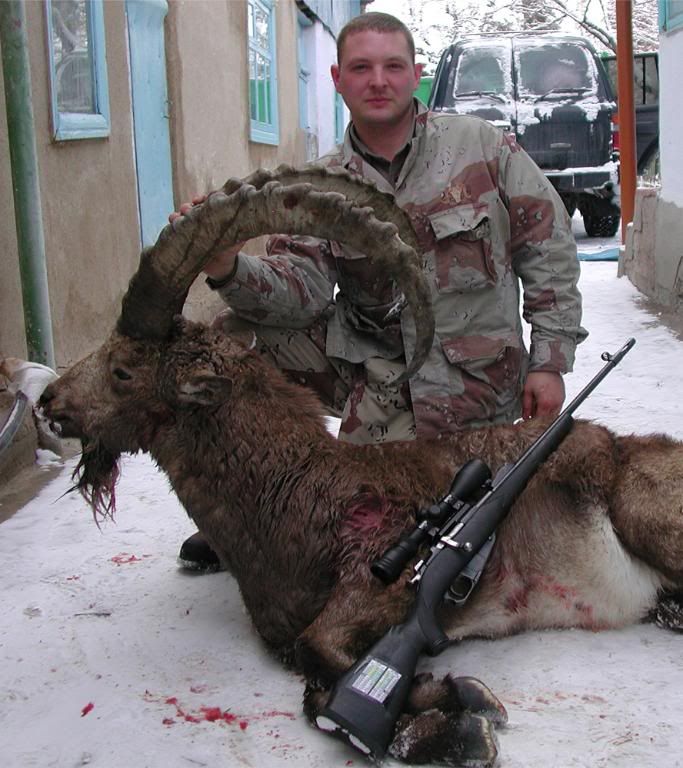
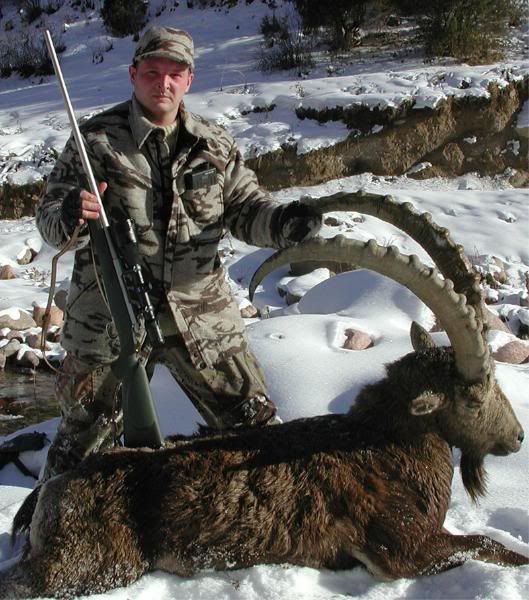
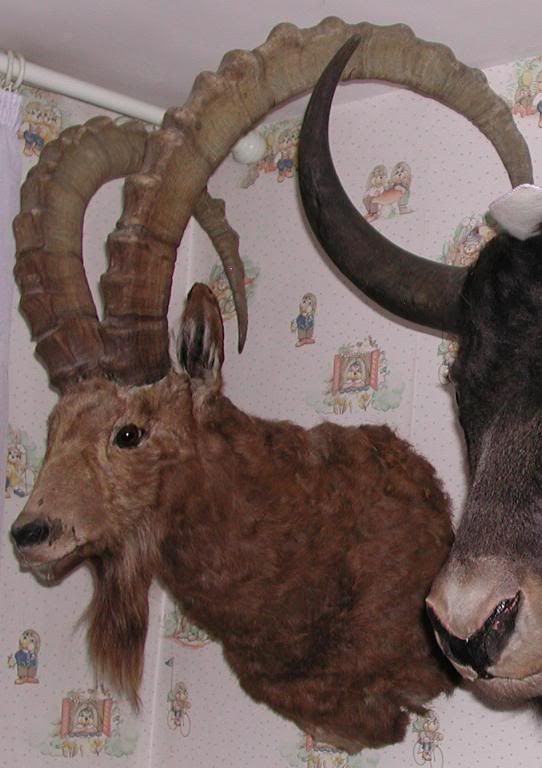
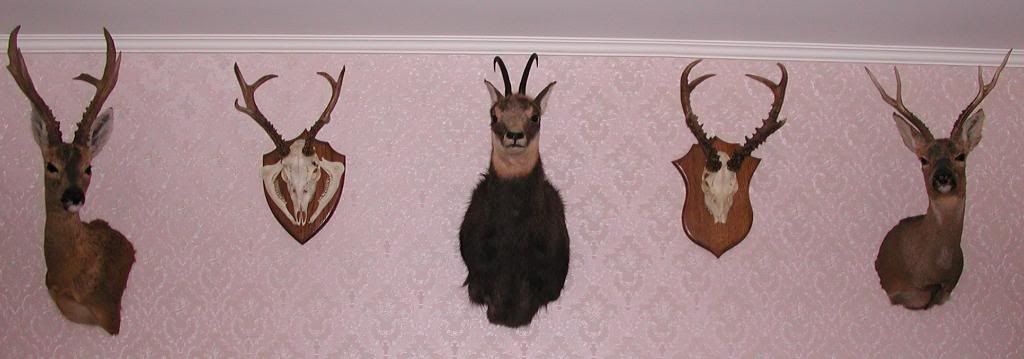
















 (ibex at home)
(ibex at home) (young)
(young) (older)
(older)
